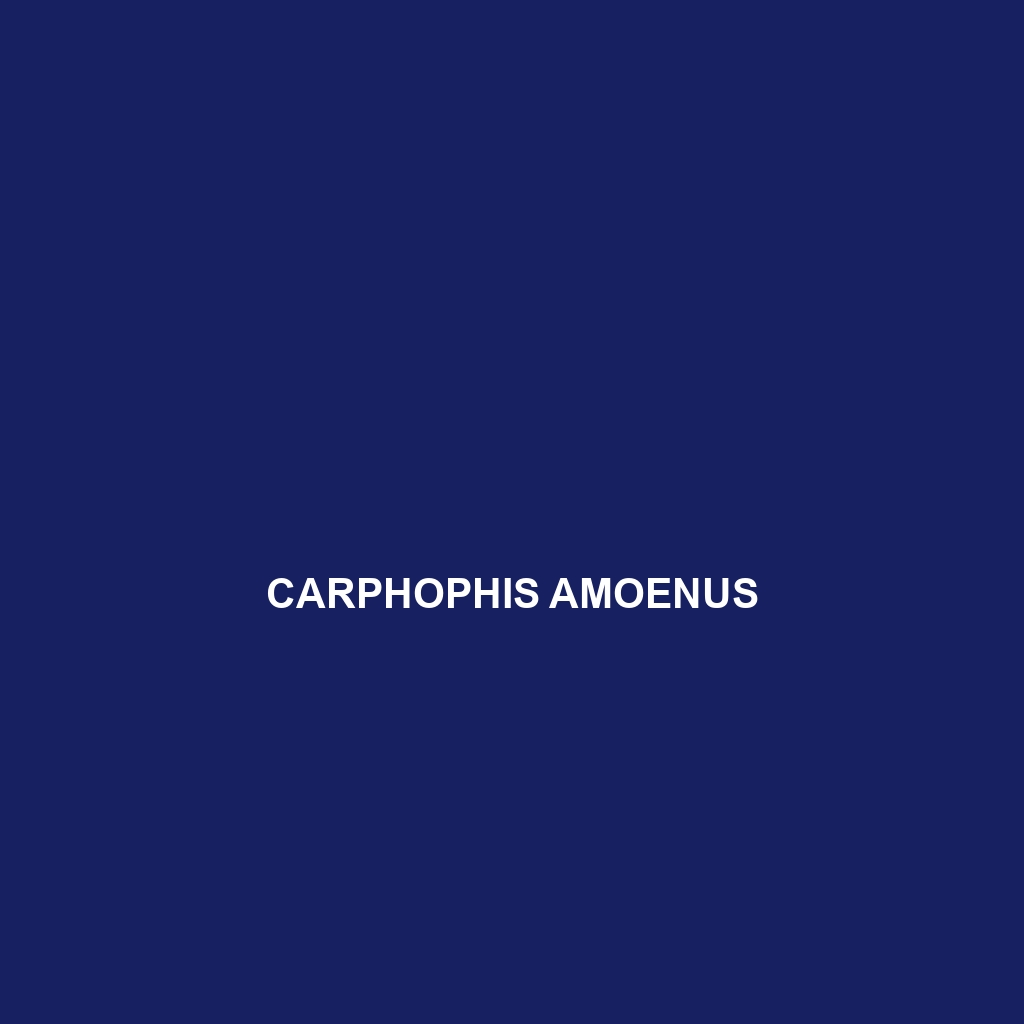Description of Carphophis amoenus
Common Name: Carphophis amoenus
Scientific Name: Carphophis amoenus
Habitat
Carphophis amoenus, commonly known as the Eastern Worm Snake, primarily inhabits the eastern regions of North America. This species is often found in moist, loamy soils, frequently within wooded areas, grasslands, and near streams. They prefer habitats with abundant leaf litter and decaying organic matter, which provides shelter and foraging opportunities. Geographic locations include parts of the southeastern United States extending into the Midwest.
Physical Characteristics
The Eastern Worm Snake typically reaches an average length of 18 to 30 inches. They exhibit a smooth, slim, and cylindrical body, often characterized by a light brown or gray coloration, with a darker hue along the dorsal side. Notable features include a distinct, pointed snout and a relatively small head. Their belly is usually a creamy white or yellow, making them easy to identify amongst leaf litter.
Behavior
Carphophis amoenus is generally a secretive and fossorial species, spending much of their life underground or beneath debris. They are most active during the early morning or after rain when they may emerge to hunt for food. Due to their elusive nature, they are not often spotted in the wild, which contributes to their intriguing reputation among herpetology enthusiasts.
Diet
The diet of Carphophis amoenus primarily consists of soft-bodied invertebrates, particularly earthworms, slugs, and other small soil-dwelling organisms. Their feeding habits highlight their role in soil health, as they contribute to the natural regulation of invertebrate populations within their ecosystem.
Reproduction
Carphophis amoenus breeds in the spring, after hibernation, when males seek out females through pheromones. Females lay clutches of 3 to 10 eggs in moist environments, such as under logs or within leaf litter. The eggs typically hatch by late summer, with hatchlings resembling miniature adults and displaying similar coloration.
Conservation Status
The Eastern Worm Snake is currently classified as a species of Least Concern by the IUCN, although habitat loss due to urbanization poses potential threats. Conservation efforts are vital to maintaining their populations and habitats in the face of environmental changes.
Interesting Facts
Eastern Worm Snakes are often mistaken for juvenile snakes due to their slender bodies and non-threatening nature. They are harmless to humans and can produce a foul-smelling musk when threatened, which serves as a defensive mechanism against predators.
Role in Ecosystem
Carphophis amoenus plays a significant role in its ecosystem as a predator of invertebrates and as prey for birds and larger mammals. Their feeding and burrowing activities contribute to soil aeration and nutrient cycling, making them an integral part of the ecological balance.
